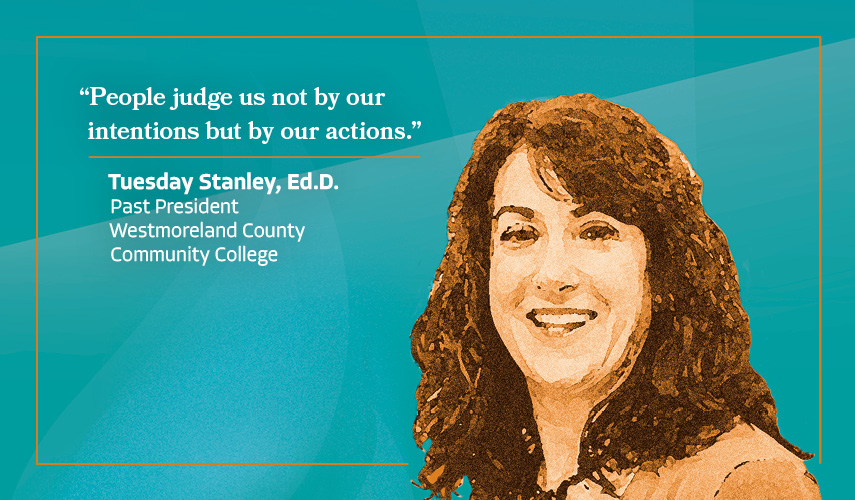
Thought Leadership
Healing a Dysfunctional Leadership Team
In my years of leadership, I’ve learned that a team’s health can make or break an organization’s mission. When I took on the presidency at Westmoreland County Community College in 2014, I was deeply committed to building a healthy, cohesive team. I wanted a leadership team that was rooted in trust, driven by shared purpose, and dedicated to lifting each other up in service to our students and community.
However, as many leaders discover, you don’t always get to build your team from scratch. You inherit strengths and struggles alike. When dysfunction shows up—whether it’s gossip, competition, or a lack of accountability—it’s the leader’s role to set things right.
Reflecting on the Five Dysfunctions of a Team by Patrick Lencioni, I recognized the telltale signs in my own leadership circle. Distrust, fear of conflict, and inattention to shared goals are not just harmful traits—they’re impediments to our mission. I had to make a choice: address these behaviors head-on or risk their ripple effects on every corner of our college community.
People judge us not by our intentions but by our actions.

By Tuesday Stanley, Ed.D.,
Former President
Westmoreland County Community College
Reimagining Hiring
My first lesson came in recognizing that while we can’t always control the team we inherit, we can control the team we build. Early in my presidency, I heard a speaker make a simple but profound point: people judge us not by our intentions but by our actions. That prompted me to rethink our hiring approach, especially for leaders who would shape our culture. Rather than relying on traditional questions about strengths and weaknesses, I started using situational questions to see how candidates handled real challenges. I wanted to hear their stories of integrity, resilience, and growth. I learned so much more about candidates by asking questions like, “What would you do if you made a mistake that went unnoticed?” Through these questions, I gained insights into their problem-solving, ethics, and willingness to learn. I wanted a team that would lift each other up, not tear each other down
Accountability Beyond Individual Goals
To strengthen our culture of accountability, I revised our annual performance reviews to include contributions to team success. It wasn’t enough for my cabinet members to achieve their department goals; I wanted them to actively support their peers. One instance comes to mind when our vice president of enrollment was overwhelmed by a backlog of transcript evaluations. The VP of academics stepped in, rallying faculty and deans to help clear the workload in record time. This spirit of mutual support not only solved the immediate problem but reinforced a culture of teamwork and shared purpose.
Recognition became a cornerstone of our culture. At the start of every cabinet meeting, I asked my team to share stories of how they supported each other. These moments were more than mere acknowledgments—they set the tone for collaborative conversations and underscored the value we placed on teamwork. Another memorable practice we adopted was the “bragging buffet,” where team members could publicly celebrate their achievements and highlight each other’s contributions. This simple act of celebration bonded our team and kept our focus on shared victories.
The Power of Alignment
Breaking down silos is vital to any organization’s success, and our college was no different. Inspired by The 4 Disciplines of Execution, we adopted the “huddle” concept—brief, action-oriented meetings that kept us aligned. These gatherings were not just about updates; they were about problem-solving in real time. For instance, our enrollment and retention teams would hold twice-weekly huddles to review metrics and tackle issues as they arose. By joining these huddles, I saw firsthand the power of alignment, where solutions were immediate and support was unwavering.
Of course, courageous leadership often requires us to make tough decisions, including parting ways with those whose behavior no longer aligns with our values. While these conversations are never easy, I approached them with empathy, understanding that nobody aspires to become a “toxic” employee. I found that framing these discussions around finding a better cultural fit allowed for mutual understanding and respect. Sometimes, the most compassionate thing we can do as leaders is help others find an environment where they can truly thrive.
Embracing a Time for Change
The recent challenges in higher education have left many leaders stretched thin, operating with reduced teams and heightened stress. I believe this is the perfect time for leaders to shape the culture they envision. We can use these moments to cultivate trust, empower our teams, and tap into hidden talents within our own walls. By taking these steps, we create a workplace where collaboration, respect, and accountability are woven into the very fabric of our mission.
A sentiment from Patrick Lencioni sticks with me: “It is teamwork that remains the ultimate competitive advantage, both because it is so powerful and so rare.” If we, as leaders, commit to fostering healthy teams, we not only improve our organizations but create a lasting impact that transcends our tenure.

